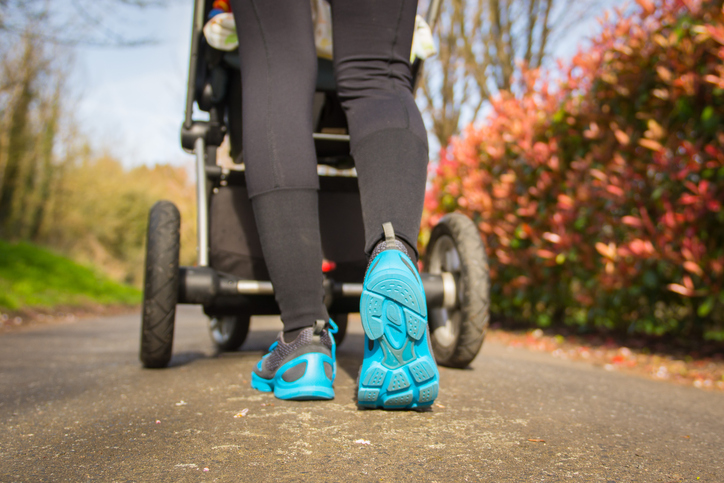Stacey: A Case Study Of Post-Natal Urinary Incontinence
Stacey: A Case Study Of Post-Natal Urinary Incontinence
Urinary Incontinence after childbirth is a very common problem. However, too often it is dismissed by health professionals and women as 'normal', with a reminder to 'do pelvic floor exercises'. This case study highlights the complexities than can exist after childbirth, and the importance of a thorough subjective and objective assessment.
Subjective Assessment
- History; Stacey, a 32-year-old G1P1, self-referred to WMHP for management of urinary incontinence. This commenced following the vaginal birth, with prolonged second stage and forceps, of her daughter Mia (4225gms), 10 weeks prior.
- Bladder: Stacey reported leaking urine with coughing, sneezing, and walking longer distances and urgency urinary incontinence on route to the toilet with most voids.
- Containment: 1-2 moderate sized continence pads per day.
- Fluid intake: As Stacey was breastfeeding she reported 'drinking lots of water to help her milk supply', but couldn't give an estimate of her total daily intake.
- Bowel: Constipated, opening her bowels once per week with lots of straining. Being so busy with Mia her diet consisted of 'mainly toast' with minimal fruit and vegetable intake. She had no bowel control issues.
- Prolapse: Stacey reported mild vaginal heaviness and dragging but no awareness of a bulge.
- Sexual function: Stacey had returned to intercourse on a few occasions, reporting it "doesn't feel like it used to".
- Psychosocial history: With no family in Melbourne and her husband working long hours, Stacey has minimal support. Mia is a 'terrible sleeper' and Stacey is feeling very overwhelmed about being a new parent. She is also distressed about her incontinence and is avoiding Mother's group and socialising for fear of having an accident.
- Activity levels: As Mia will only settle in the pram, Stacey was walking 4-5 hours a day.
Objective Assessment
- Patient reported outcome measures
- ICIQ-UI short form; 16/21 (high)
- Pelvic Floor bother questionnaire; high bother for her stress and urge incontinence.
- Per vaginum examination:
- Increased levator hiatus, loaded rectum, mild anterior vaginal wall laxity and reduced vaginal sensation bilaterally.
- Flicker of pelvic floor muscle contraction.
- Palpable gap at right puborectalis insertion suggesting avulsion injury.
- Bladder diary:
- Fluid intake 4-5 Litres of water per day
- Voided volumes: range 200-900mls, large average of 600mls
- Urgency rating of "4/4" with the majority of her voids
- Paper Towel Test; moderate urine loss with 3 coughs.
- Transabdominal ultrasound bladder scan; No residual
- Negative dipstick
Clinical impression
Stacey has stress urinary incontinence and urgency urinary incontinence due to poor PFM function and high fluid intake. PFM trauma is common1 after vaginal delivery and encompasses the levator ani muscles, fascia and connective tissues, nerve supply and pelvic organs2. Stacey's risk factors of a prolonged second stage, forceps, a >4kg baby and her age would have contributed to her pelvic floor dysfunction3. In Stacey's case, constipation and excessive walking were compounding her symptoms.
On first impression it may appear that Stacey's symptoms would respond to PFM Exercises alone, however, the degree of PFM dysfunction means it is unlikely she will improve without utilising adjunctive therapy. She also needs to reduce the load on her pelvic floor muscle by addressing her constipation and excessive walking. Her psychosocial factors need to be considered in her management program.
Treatment Program
- Modification of fluid intake: Stacey was advised to reduce her fluid intake to no more than 3 Litres per day.
- Bladder training: Instruction to "prioritise her bladder" and respond in a timely fashion to bladder urges and utilisation of urge suppression strategies.
- Treat constipation: Stacey was commenced on Lactulose and educated regarding dietary changes for healthy bowels. A bowel routine was established, and defaecation dynamics taught.
- Pelvic floor muscle training with neuromuscular electrical stimulation: Electrical stimulation with a vaginal sensor was used to facilitate a pelvic floor muscle contraction and build strength. This was in addition to a supervised and progressed pelvic floor muscle training program.
- Encourage rest: The importance of getting rest and reducing her excessive walking was discussed. Stacey was encouraged to talk to her husband about sharing the load and to speak to her GP and Maternal & Child health nurse regarding settling strategies for Mia.
Outcome
2 weeks after modifying Stacey's fluid intake, changing her bladder habits, reducing constipation and increasing rest, Stacey's incontinence had reduced by ~25%. Following 12 weeks of electrical stimulation and her PFMT program, Stacey had a weak PFM contraction and was able to start using it functionally against increased intra-abdominal pressure. Following 6 months of treatment, Stacey had no vaginal heaviness or urgency, only required a liner for occasional SUI and was able to elicit a moderate strength PFM contraction. At 12 months post-natal, following cessation of breastfeeding and continuation of intensive pelvic floor muscle training, Stacey was pad free, reporting only occasional SUI with multiple star jumps. Paper towel test was dry and repeat ICIQ-UI had reduced to 2/21 with a significant improvement in her quality of life.
References
1. Gyhagen Bullarbo, Nielsen & Milsom (2012). The prevalence of urinary incontinence 20 years after childbirth: a national cohort study in singleton primiparae after vaginal or caesarean delivery. BJOC. 120(2), 144-151.
2. Chaliha, C (2009). Postpartum pelvic floor trauma. Current Opinions in Obsterics and Gynaecology. 21, 474-479.
3. Wilson, Dornan, Milsom & Freeman (2014). UR-CHOICE: can we provide mothers-to-be with information about the risk of future pelvic floor dysfunction? Int Urogynecol J. 5(11), 1449-52.
February 2018





